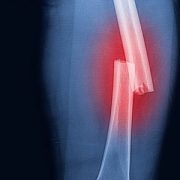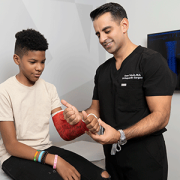Race and salvage hip procedures in cerebral palsy

The authors discovered that Black patients had an increased risk compared to white patients of undergoing a salvage procedure for hip dysplasia.
A new study by Children’s National Hospital orthopedic surgeon Sean Tabaie, M.D., FAAOS, examined whether or not race is an independent risk factor for patients with cerebral palsy to undergo a salvage hip procedure or experience postoperative complications for hip dysplasia treatment.
Due to tone issues, patients with cerebral palsy are specifically prone to hip dislocation. Treatment modalities for these patients include preventive soft tissue release, reconstruction and salvage procedures. Reconstructive surgery of the hip joint is considered the gold standard with the goal of producing a mobile and painless hip. Salvage procedures are defined as operations that are used after there has been permanent changes to anatomy of the femur and/or pelvis. In the case of patients with cerebral palsy, when hip reconstruction is no longer an option, salvage procedures are considered a last resort, if not a radical solution, to improve quality of life and pain relief.
Using the American College of Surgeons National Surgical Quality Improvement Program (NSQIP) Pediatric database, Dr. Tabaie and colleagues examined data from 3,906 patients with cerebral palsy between the ages of 2 and 18 years undergoing a procedure for hip dysplasia. They discovered that Black patients had an increased risk compared to white patients of undergoing a salvage procedure for hip dysplasia. Additionally, Black patients were found to have an increased risk of any postoperative complication compared to white patients. Fortunately, there were no significant findings between the race and risk of surgical site complications, unplanned readmissions or reoperations.
The authors conclude that, “After controlling for variability in baseline characteristics, the present results suggest that patient race is independently associated with the risk of pediatric patients with cerebral palsy to both undergo a salvage hip procedure and to experience postoperative medical complications, with Black patients having increased odds for these unfavorable outcomes compared to white patients.”
Dr. Tabaie is the medical director of the Motion Capture and Gait Lab at The Fight for Children Sports Medicine Center at Children’s National Hospital as well as assistant professor of Orthopaedic Surgery and pediatrics co-chair of Diversity, Equity and Inclusion for the Joseph E. Robert Jr., Center for Surgical Care.
Read the full article, Race Is Associated With Risk of Salvage Procedures and Postoperative Complications After Hip Procedures in Children With Cerebral Palsy, in the Journal of Pediatric Orthopaedics.











